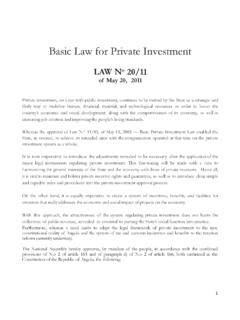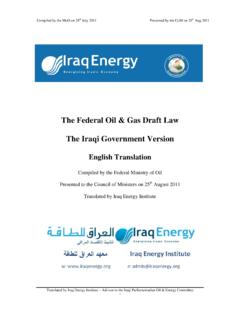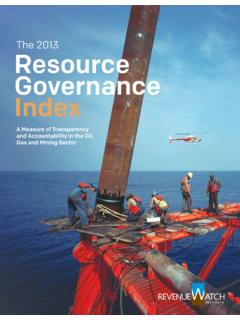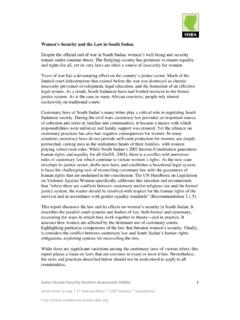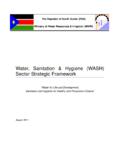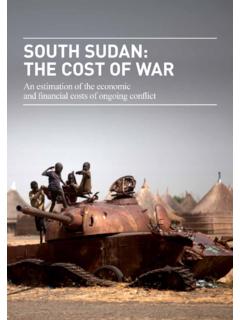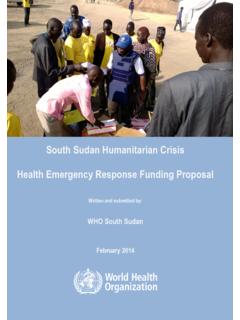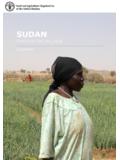Transcription of Country Analysis Brief: Sudan and South Sudan
1 Country Analysis brief : Sudan and South Sudan Last Updated: September 3, 2014. Overview South Sudan gained independence from Sudan in July 2011. Most of the oil production capacity is now in South Sudan , but the Country is landlocked and remains dependent on Sudan because it must use Sudan 's export pipelines and port. Disagreements over oil revenue sharing and armed conflict have curtailed oil production from both countries over the past few years. Sudan and South Sudan , both located in northeastern Africa, became independent countries in July 2011, following a referendum in South Sudan where the people overwhelmingly voted for independence.
2 Prior to the split, the unified Sudan was the second-largest oil producer in Africa in 2010, outside of the Organization of the Petroleum Exporting Countries (OPEC). Since the split, Sudan and South Sudan 's production has declined, and together they ranked as the fourth- largest non-OPEC African oil producer in 2013. Disagreements over oil revenue sharing and armed conflict have curtailed oil production from both countries over the past few years. The unified Sudan began producing oil in the 1990s. Most of the producing assets are near or extend across the de facto border between Sudan and South Sudan .
3 South Sudan gained control of about three-fourths of the oil production when it became independent in July 2011, although the production split has since changed because of reoccurring production outages in South Sudan . South Sudan 's independence and Sudan 's production loss was devastating to Sudan 's economy. It resulted in the loss of 55% of the Sudan 's fiscal revenues and about two-thirds of its foreign exchange earnings, according to the International Monetary Fund (IMF). Sudan 's crude oil export revenues fell from almost $11 billion in 2010 to just under $ billion in 2012.
4 Oil still plays a vital role in the economies of both countries, albeit to a lesser extent in Sudan . According to the IMF, oil revenue accounted for 27% of Sudan 's total government revenues and grants in 2012, down from nearly 60% two years prior. Oil represented 98% of South Sudan 's 1. government revenue after the Country became independent, although that share is unclear in more recent years because of the frequent disruptions to the Country 's oil production. Sudan and South Sudan 's oil sectors are still closely linked. Because South Sudan is landlocked, it remains dependent on Sudan to transport its oil through Sudan 's pipelines to the Bashayer port along the Red Sea.
5 Sudan also relies on the fees it charges South Sudan for using its pipelines and facilities to help fill Sudan 's financing gap because of the loss of oil export revenue. In January 2012, South Sudan voluntarily shut in all of its oil production, mainly because of a dispute with Sudan over oil transportation fees via the pipelines. After nearly 15 months of intermittent negotiations, the countries agreed on a transit fee, and South Sudan restarted oil production in April 2013. In late December 2013, South Sudan 's production was partially halted again because of armed civil conflict.
6 2. 3. History Prior to independence, the unified Sudan fought two civil wars. The second civil war ended with the signing of the Comprehensive Peace Agreement that was put into place from 2005 to 2011. South Sudan gained its independence from Sudan in July 2011. However, there are still unresolved issues that have caused tension between the countries after independence. The border between the two countries is undefined, and some areas along the border remain contested. Since its independence in 1956 from joint British and Egyptian rule, Sudan has experienced several armed conflicts that have affected the Country 's economic development, particularly its natural resources.
7 The longest conflicts in the unified Sudan were the two civil wars fought between the Northern Sudanese government in Sudan (1955-1972) and the government in Southern Sudan (1983-2005). The second civil war ended with the signing of the Comprehensive Peace Agreement (CPA) that was in place from 2005 to CPA set standards for sharing oil revenue (50:50 split) and a timetable toward a referendum on the South 's independence. A. referendum took place in January 2011 in which the people of the South voted to secede from Sudan . In July 2011, Sudan became two countries: Sudan (Khartoum as the capital) and South Sudan (Juba as the capital).
8 The border separating Sudan and South Sudan is still not officially defined, and some areas remain contested. The current de facto border was established when Sudan gained independence in 1956, and it is known as the 1956 border. The CPA called for the border to be demarcated, and a Technical Border Committee (TBC) was established in 2005 to demarcate the 1956 border. The committee agreed on most of the border, but five areas remain disputed, according to a report by the International Crisis Group. One of the most contentious areas, which was excluded in the TBC's mandate, is the Abyei area, located between the states of Bahr al Ghazal, Warrap, and Unity.
9 Oil was discovered in Abyei in 1979, which escalated tensions between both sides. The Abyei Boundary Commission (ABC). was authorized to define the territory, and in 2005 it ruled that the Heglig and Bamboo oil fields fell within Abyei. The North contested the ruling because it placed a significant portion of its oil reserves in the disputed territory. The dispute was later sent to the Permanent Court of Arbitration (PCA) in The Hague. In 2009, PCA redefined the Abyei area and placed the Heglig and the Bamboo oil fields outside of Abyei. A referendum was scheduled for January 2011 to determine whether Abyei would join Sudan or South Sudan , but the referendum did not occur because of disagreements over voter eligibility.
10 Although uncertainties over border demarcation and the ownership of Abyei remain, the Heglig and Bamboo oil fields are considered today to be in Sudan 's South Kordofan state. 4. Petroleum and other liquids Most of Sudan 's and South Sudan 's proved reserves of oil and natural gas are located in the Muglad and Melut Basins, which extend into both countries. Natural gas associated with oil production is flared or reinjected into wells to improve oil output rates. Neither Country currently produces or consumes dry natural gas. According to the Oil & Gas Journal (OGJ), Sudan had billion barrels and South Sudan had billion barrels of proved oil reserves, as of January 1, 2014.
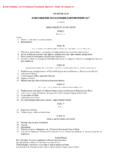
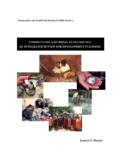
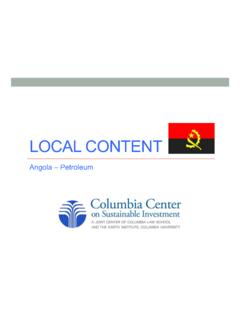
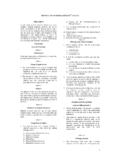
![[Chap0704]CHAPTER 7:04 CORRUPT PRACTICES …](/cache/preview/6/f/6/e/c/c/4/c/thumb-6f6ecc4c9459ba6eec9653fd3f470db0.jpg)
